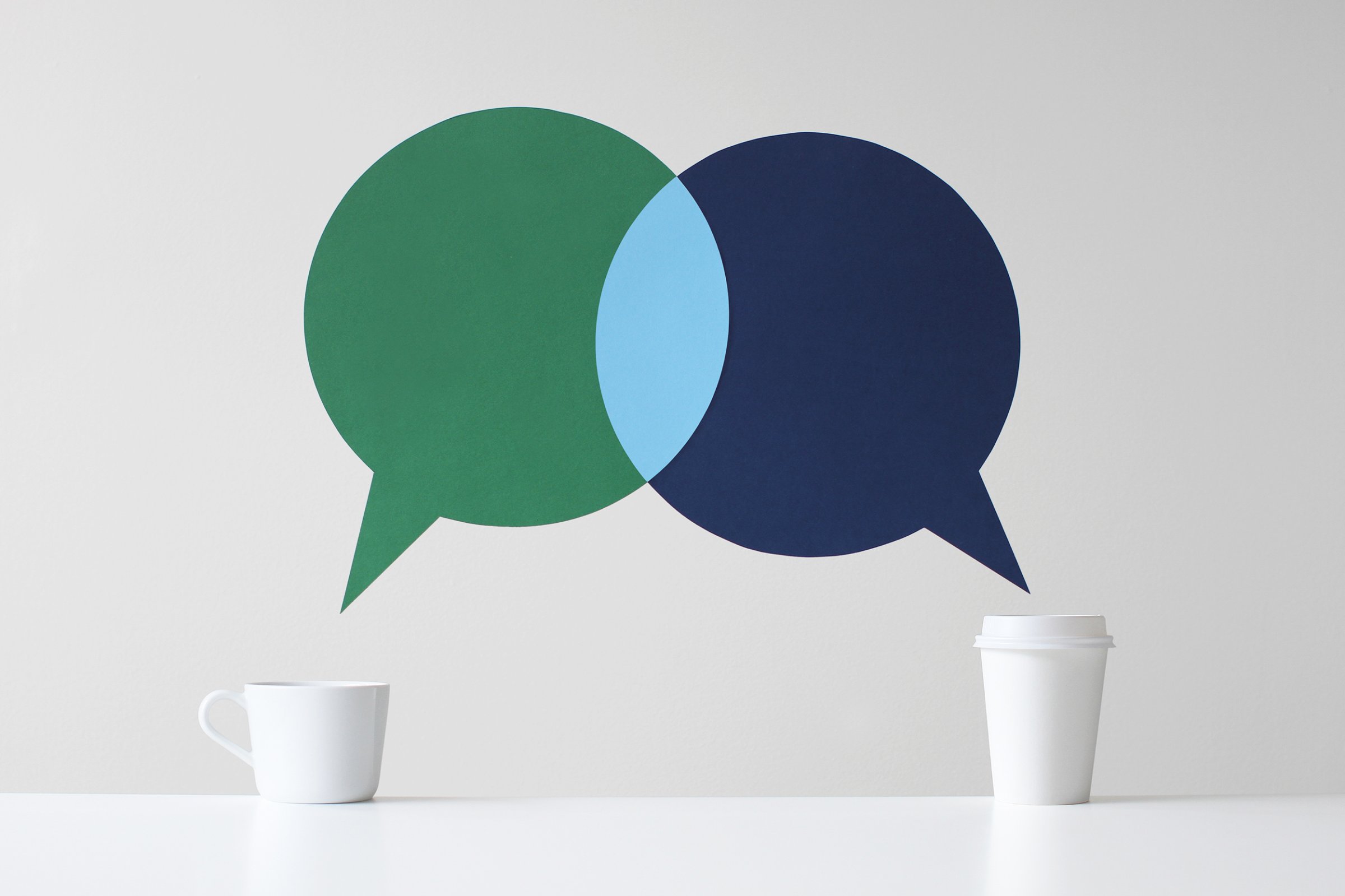
Whether you’re on a first date, at a networking event or with a new group of friends, the prospect of holding a meaningful conversation with an unfamiliar person can cause considerable social anxiety. Many books and training seminars promise to help you craft the perfect opener, to script conversations that will yield positive results and powerful relationships.
But the things is, a conversation is a totally improvised interaction. So trying to plan it out is a fruitless effort that will most likely result in increased stress. Of course, we all enter into social engagements with an idea of what we might say or do, but that plan almost always goes up in smoke at the beginning of the exchange.
I’ve worked with hundreds of individuals to help them become more socially confident and be truly present in their professional and personal relationships. What I’ve learned is that, by practicing the skill set needed to fully listen and adapt in the moment, you can prepare yourself to get the most out of your conversations and leave the other party with a positive feeling about their time with you.
Fortunately, the main skill needed to create compelling conversations is one we are all inherently equipped with already: Storytelling. What makes for a good story also makes for a good conversation.
Let’s consider the anatomy of a conversation with this information in mind. Every conversation, like every story, consists of a beginning, middle and end:
Beginning: Recognize that the content of your introductory statement is less important than the act of making one. People don’t remember what was said exactly during an encounter with a new individual. Instead, they remember the sentiment and emotion they had while interacting with that person. Most people become very tied up with planning the perfect opener, but again, that isn’t the most important part of the engagement. Start by simply saying, “Hi,” or giving the individual a compliment. After all, great stories often start with “Once upon a time…” but that isn’t what we remember about them.
Read more: Maria Shriver on The Power of Conversation
Middle: This part of the conversation requires a highly underrated skill set: Listening. Explore the passion of the other individual. People love talking about what they care about. Ask questions, make eye contact, truly care about what they are saying and make statements to acknowledge that you are listening. Sometimes, making the best impression involves doing less of the talking.
End: Most of us fear the end of a conversation, when the dialogue can stagnate and leave an awkward taste in the mouths of both parties. Exit the conversation with a specific call to action, and leave the other person wanting more. Try saying something along the lines of, “Great meeting you. I’m going to keep mingling, but I would love to follow up and continue the conversation later. Do you have a card?”
Read more: 6 TED Talks That Will Boost Your Creativity
Next time you find yourself in a new engagement, remember the art of storytelling. Rather than scripting, listen and leave the other individual wanting more. Your conversations and relationships will be far more meaningful as a result.
Bill Connolly is a marketer, speaker and comedian and the author of two books, including The Success Disconnect: Why The Smartest People Choose Meaning Over Money.
More Must-Reads from TIME
- Why Trump’s Message Worked on Latino Men
- What Trump’s Win Could Mean for Housing
- The 100 Must-Read Books of 2024
- Sleep Doctors Share the 1 Tip That’s Changed Their Lives
- Column: Let’s Bring Back Romance
- What It’s Like to Have Long COVID As a Kid
- FX’s Say Nothing Is the Must-Watch Political Thriller of 2024
- Merle Bombardieri Is Helping People Make the Baby Decision
Contact us at letters@time.com